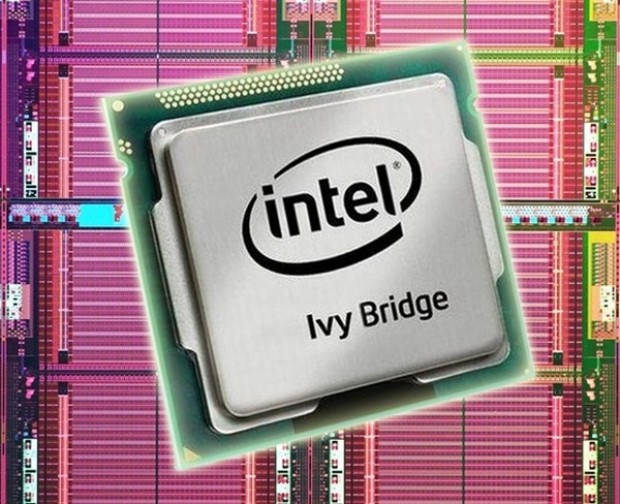Intel's Ivy Bridge Hotter Than Sandy Bridge When Overclocked
Intel's 22 nano-meter die shrink can be seen as a huge achievement for the company, but that doesn't mean it is without faults.
The question among reviewers while overclocking Ivy Bridge chips is why the processors run hotter than their predecessor, Sandy Bridge. Overclockers.com reports temperatures “to be as much as 20 °C higher on Ivy Bridge compared to Sandy Bridge when overclocked.”
This extra heat is a huge drawback when overclocking, allowing Sandy Bridge to hit a much higher frequency and effectively matching the performance levels of Ivy Bridge. The question remains, how is it possible that the more power-hungry Sandy Bridge chips run cooler than Intel's latest Ivy Bridge processors?
According to The Inquirer, Intel has no problem admitting that the Ivy Bridge platform runs hotter than its predecessor, stating that the extra heat is due the 22 nm die shrink, causing increased thermal density. The company noted that it is also using “a different package thermal technology”, that “thermal technology” is known as thermal paste, which replaced a soldered heat spreader used on Sandy Bridge processors. Intel further added that “users may observe higher operating temperatures when overclocking,” but reassured customers that “this is as designed and meets quality and reliability expectations for parts operating under specified conditions.”
So there you have it, Ivy Bridge runs hotter than Sandy Bridge when overclocked but offers reduced power consumption and meets Intel's expectations at stock speeds. If you are interested in overclocking, make certain to purchase an adequate cooling solution or hold off on Ivy Bridge until the next stepping, which may improve overclocking capabilities.
Get Tom's Hardware's best news and in-depth reviews, straight to your inbox.
-
kawininjazx I will be the first to say "meh"Reply
Yea, 20 degrees higher on a stock inch thick cooler. If you are going to overclock you can get a decent cooler for a couple dollars, I imagine it would still run within reasonable temperatures overclocked on a cheap aftermarket cooler. -
trumpeter1994 DroKingOh noes! Intel Fanboys gonna be so mad. Bulldozer is cooler in this case after allYeah but bulldozer struggles to keep up with Phenom 2.... Which it is supposed to replace...... and neither one can touch sandy bridge let alone ivy bridge which slightly out performs sandy bridge.Reply -
BlackDeath Just a thought but what if you removed the thermal plate that they used paste on and put artic silver on it and used an aftermarket water cooler? To hard to do? I know it would void the Intel warranty..Reply -
JamesSneed Intel used “a different package thermal technology” because its cheaper and they really don't have any completion with stock frequencies. So why should they make the chips overclock with low amounts of heat?Reply -
JamesSneed Back in the day CPU's didn't have these thermal plates. Just bolted the CPU cooler right up against the CPU. Of course you had a few cracked CPU's from the pressure.Reply
Wonder if a Thermalright cooler would do better on these CPU's? I ask because the base on their coolers used to be concave(not sure if they still are) which should reduce the space between the thermal paste and the cpu plate if it bends in a bit. -
geekapproved So basically the reason is because they tried to save cost by pasting the heatspreader on instead of soldering it on.Reply -
SteelCity1981 So cost cutting methods by intel is resulting in higher core temps with Ivy Bridge. You miles well just take the heatshild off and apply your own thermal paste, like you did back in the Athlon K7 days.Reply -
jimmysmitty SteelCity1981So cost cutting methods by intel is resulting in higher core temps with Ivy Bridge. You miles well just take the heatshild off and apply your own thermal paste, like you did back in the Athlon K7 days.Reply
Its interesting how people think it was a cost saving method when in reality the amount saved by this is probably minimal per CPU since they procude more than anyone else.
I don't know why they did but even if they stuck with the solder method, there is no way for anyone to be 100% sure it would be any better since the smaller die size does add to less space to allow for heat dissipation.
I read somewhere that Intel is possibly planning on moving back to the solder method and that would be a different stepping but we will have to wait and see if that actually happens and if it does the results will be clearer there.
I personally think the only way to see lower temps with IB is to have more cores or more cache.

